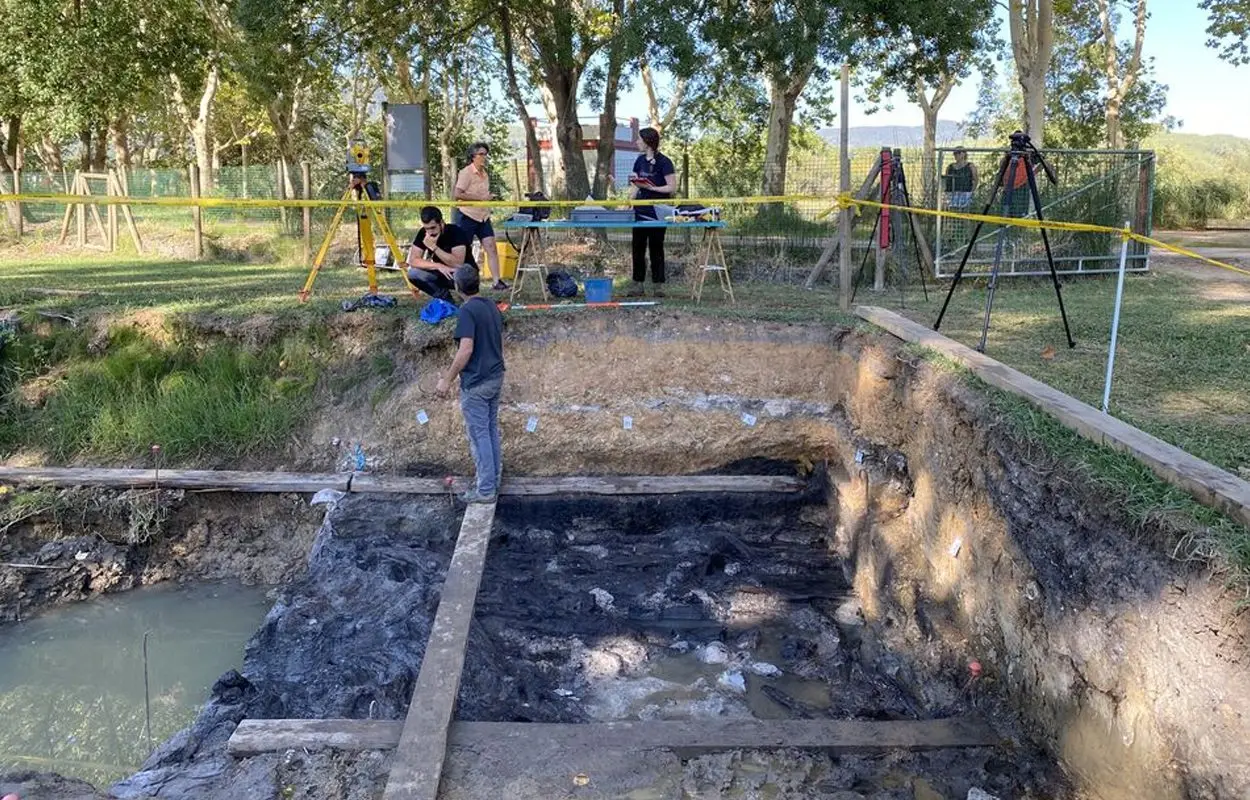Archaeologists have uncovered 7,300-year-old Neolithic structures at the La Draga archaeological site.
La Draga is an ancient lakeshore settlement, located in the Spanish city of Banyoles in northeastern Catalonia. The site was first discovered in 1990, revealing an Early Neolithic Cardial settlement occupied from the end of the 6th millennium BC.
Recent excavations, co-directed by IPHES-CERCA, working in collaboration with the Autonomous University of Barcelona (UAB), the Superior Council for Scientific Research (CSIC-IMF Barcelona), the Museum of Archaeology of Catalonia (MAC) and the Centre for Archaeology Underwater of Catalonia (CASC), have uncovered large structural elements of well-preserved wooden constructions.
Constant humidity and anoxic/waterlogged conditions of the site allowed the preservation of organic remains, making La Draga a site of remarkable interest for Neolithic European studies.
The co-directors of the research project, Toni Palomo, Raquel Piqué (UAB), and Xavier Terradas (CSIC-IMF Barcelona), said: “There are mainly large wooden planks more than three metres long that occupy practically the entire surface of the excavated area. The excavation process should allow us to make very precise interpretations of the shape of these structures, the construction techniques and the time of their construction, as well as their relationship with areas excavated in previous campaigns.”
The researchers have also conducted archaeological and palaeoecological prospecting on the western shore of the Lake, both terrestrial and underwater. The focus of this study is to reconstruct the environmental dynamics of Banyoles Lake during the Holocene and verify the possible presence of other prehistoric evidence of occupation.
“The soundings carried out have allowed us to document signs of great interest in order to reconstruct what the environment was like in prehistoric times”, says Dr. Jordi Revelles, Juan de la Cierva postdoctoral researcher at IPHES-CERCA.
The archaeological campaign is part of a four-year research project approved by the General Directorate of Cultural Heritage of the Generalitat and coordinated by the Archaeological Museum of Banyoles.
Header Image Credit : Banyoles City Council







